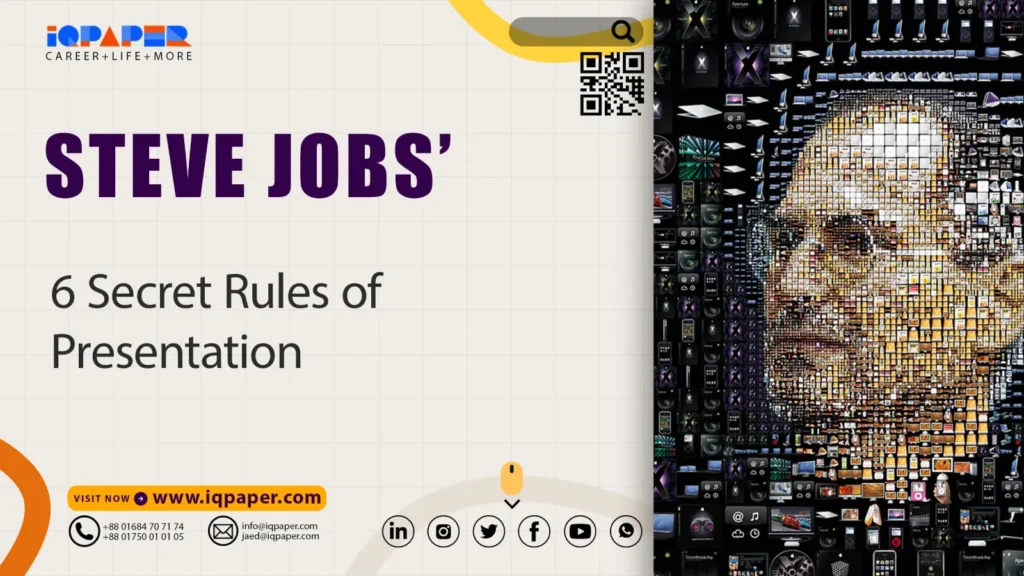Steve Jobs, the legendary co-founder and the former CEO of Apple Inc., was much more than a tech visionary. He was a master communicator, known for his compelling storytelling, commanding stage presence, and ability to turn product launches into unforgettable experiences.
Apart from leading Apple, he was also the chairman and majority shareholder of Pixar, the founder of NeXT and a member of The Walt Disney Company’s board of directors. Steve Jobs’ presentation style is still widely studied, discussed, praised, and emulated by professionals across industries.
Here are six powerful presentation rules that Steve Jobs followed—and how you can apply them too:
1. Simple Is Sexy
Jobs believed in using clear, simple, and accessible language—often at the level of a third-grade student. He avoided jargon, complex terms, and long-winded explanations. His goal was clarity, and he spoke slowly to ensure every word landed with his audience.
Expert Tip: Eliminate acronyms and overly long sentences. Make your language easy to understand.
2. Facts Tell, Stories Sell
Jobs didn’t just share data—he told stories. Whether it was about dropping out of college or getting fired from Apple, his personal narratives created emotional connections and left lasting impressions.
Expert Tip: Structure your key points into a story. People remember stories more than statistics because stories trigger emotional engagement.
3. Use Vocal Variety
Jobs used his voice as a tool—modulating tone, pitch, and volume to emphasize points and hold attention. In the 2007 iPhone launch, he famously repeated: “An iPod, a phone, and an internet communicator”—each time building excitement.
Expert Tip: Record yourself and identify places where you can add pauses, raise or lower your tone, or slow down for dramatic effect.
4. Use Minimalist Slides
His slides were clean, visually appealing, and minimal. Jobs preferred a few powerful words and striking images rather than text-heavy content. He also used a plain (often black) stage background to eliminate distractions and focus audience attention.
Expert Tip: Limit each slide to one idea. Use large fonts and high-quality visuals for maximum impact.
5. Rehearse, Rehearse, Rehearse
Jobs didn’t just memorize lines—he rehearsed for weeks to perfect the flow, timing, and delivery of his presentations. According to Ken Kocienda, author of Creative Selection, Steve began practicing his MacWorld 2003 keynote nearly a month in advance, refining it day by day.
Expert Tip: Practice in the actual venue or a similar environment. Focus not just on what you say, but how you are saying it.
6. Own Your Space
Steve Jobs commanded the stage. He used purposeful movements, natural gestures, and strong eye contact. His presence conveyed confidence and authenticity.
Expert Tip: During rehearsals, plan where to move, when to pause, and how to use gestures to reinforce your message.
Timeless Inspiration: 2005 Stanford Commencement Speech
One of his most memorable speeches was the 2005 Stanford Commencement Address—a deeply personal speech filled with emotion, clarity, motivation and inspiration. Though he’s no longer with us, Jobs’ approach to presentations continues to influence and educate presenters around the world.
Conclusion:
Steve Jobs didn’t just deliver information—he delivered experiences. By following these six powerful principles, you too can craft presentations that are not only clear and impactful, but also unforgettable.

Interesting read!
Really digging this breakdown of basic strategy!